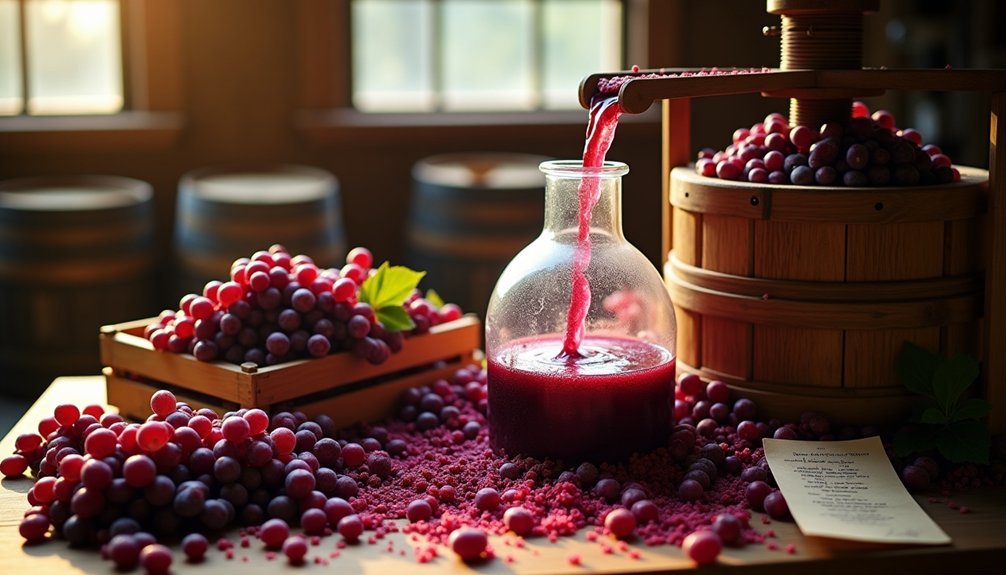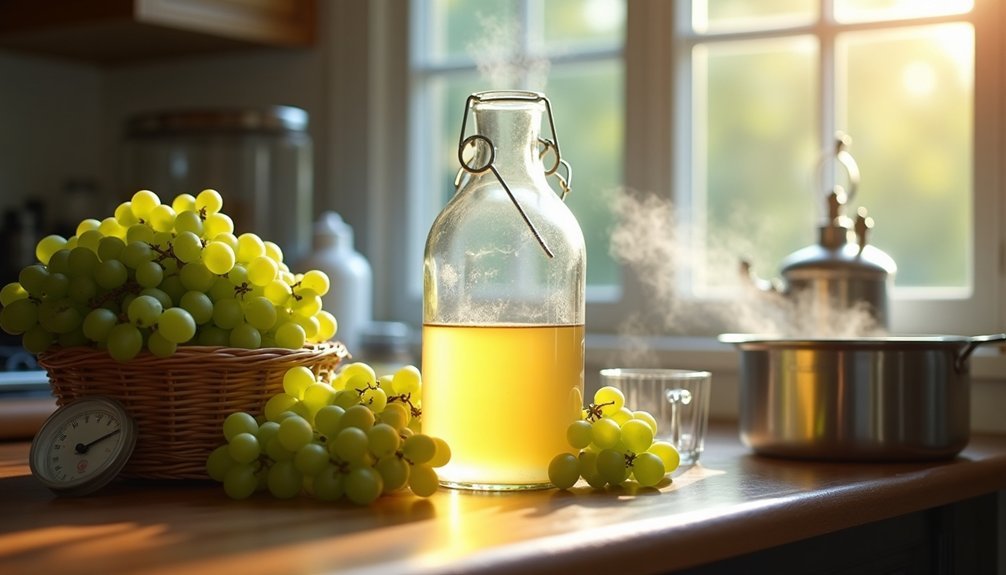I’ve crafted a romantic rose wine recipe that transforms simple garden ingredients into something truly magical. When I first sipped this delicate concoction, I was transported to summer evenings among blooming rose bushes. The subtle floral notes and gentle sweetness create an experience that’s both nostalgic and intimate. This isn’t just a drink—it’s a sensory journey that captures the essence of romance in a glass. Ready to discover how four basic ingredients can create such enchantment?
Why You’ll Love This Drink
I’ve discovered that homemade rose wine brings a certain magic to any occasion. This delicate pink elixir captures the essence of summer gardens while offering a gentle alcoholic buzz that’s perfect for intimate evenings.
What makes this recipe special is its simplicity. With just four ingredients and minimal equipment, you’ll create something truly extraordinary. The natural fermentation process transforms ordinary rose petals into a fragrant, slightly sweet beverage with complex floral notes.
I particularly love how versatile it is—serve it chilled on warm evenings or slightly warmed during winter months. It’s also a stunning conversation starter when entertaining guests, who rarely believe you’ve crafted such an elegant drink from garden flowers!
Ingredients
The heart of any good rose wine lies in its carefully selected ingredients. I’ve found that using 100g of fresh, pesticide-free rose petals creates the perfect floral foundation. Make certain they’re food-grade roses with vibrant color and fragrance.
You’ll need 1 cup (250g) of sugar to feed the fermentation process and balance the floral notes. I add 1/4 cup of whole wheat as the fermentation starter, though rice or ragi work beautifully as substitutes if you prefer.
Finally, 4 cups (1 liter) of water forms the base of your wine. I always use filtered water that’s been boiled and cooled completely to guarantee no unwanted bacteria interfere with the delicate fermentation process. Quality matters here – the purity of each ingredient directly affects your final rose wine.
Directions
Now that we’ve gathered our ingredients, let’s begin the magical process of creating your rose wine. First, place your freshly washed rose petals in an airtight container. Add the sugar and wheat (or your chosen substitute), then pour in the boiled, cooled water before sealing tightly.
Store your mixture in a dark place for about a week. I recommend stirring once or twice daily to guarantee all petals remain immersed. After seven days, strain the liquid into a clean vessel and dilute with one cup of boiled, cooled water.
Cover tightly again and let it continue fermenting in darkness for two more days. That’s it! Your romantic rose wine is ready to enjoy, though its flavor will beautifully mature with age.
Substitutions and Variations
While the traditional recipe creates a lovely base, you can personalize your rose wine with several creative substitutions. I’ve found that replacing wheat with rice creates a lighter, clearer wine, while ragi adds an earthy depth. You can also experiment with different sugar types – honey adds complexity, while brown sugar contributes a caramel undertone.
Don’t hesitate to blend rose varieties for a more nuanced flavor profile. White roses produce a delicate taste, while red varieties offer deeper, more robust notes. I sometimes add a cinnamon stick or star anise during fermentation for a subtle spice dimension.
For a non-alcoholic version, reduce fermentation time to just 2-3 days. This creates a fragrant, sweet rose cordial that can be diluted with sparkling water.
Additional Things to Serve With This Drink
Complementary pairings can elevate your rose wine experience from simply pleasant to truly memorable. I find that light, delicate foods work best with the subtle floral notes of homemade rose petal wine.
Consider serving small cheese plates featuring mild varieties like brie or chèvre alongside fresh berries and honey. The creamy textures complement the wine’s delicate profile without overwhelming it.
For a sweeter pairing, I recommend vanilla shortbread cookies or white chocolate truffles that echo the wine’s subtle sweetness. Rose-infused desserts create a lovely thematic connection—perhaps rose water macarons or Turkish delight.
If you’re hosting a gathering, create a simple antipasto platter with mild olives, cucumber slices, and lightly seasoned nuts. The clean flavors will allow your handcrafted rose wine to shine as the star.
Final Thoughts
Creating homemade rose petal wine transforms ordinary moments into special occasions with relatively little effort. I’ve found that the process itself becomes a meditation—the daily stirring, watching the transformation, and anticipating the delicate flavor that develops over time.
What I love most about this recipe is its simplicity. With just four ingredients and minimal equipment, you’re connecting with ancient traditions of home fermentation. The subtle floral notes and gentle alcohol content make this perfect for those who typically find commercial wines overwhelming.
Don’t be discouraged if your first batch isn’t perfect. Each rose variety offers different aromatics, and the fermentation process varies with temperature and environment. Embrace the experimentation—that’s part of the joy in crafting something truly personal from your garden.



